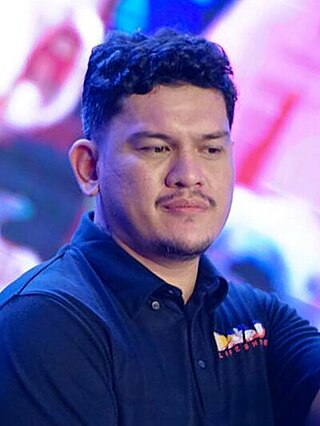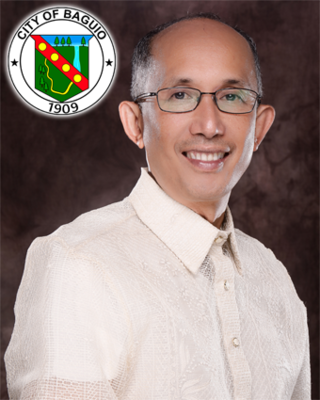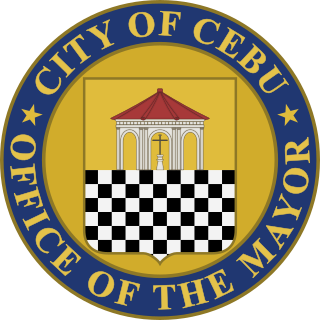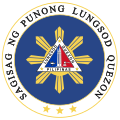In many countries, a mayor is the highest-ranking official in a municipal government such as that of a city or a town. Worldwide, there is a wide variance in local laws and customs regarding the powers and responsibilities of a mayor as well as the means by which a mayor is elected or otherwise mandated. Depending on the system chosen, a mayor may be the chief executive officer of the municipal government, may simply chair a multi-member governing body with little or no independent power, or may play a solely ceremonial role. A mayor's duties and responsibilities may be to appoint and oversee municipal managers and employees, provide basic governmental services to constituents, and execute the laws and ordinances passed by a municipal governing body. Options for selection of a mayor include direct election by the public, or selection by an elected governing council or board.

The president of the Philippines is the head of state, head of government and chief executive of the Philippines. The president leads the executive branch of the Philippine government and is the commander-in-chief of the Armed Forces of the Philippines.
Elections in the Philippines are of several types. The president, vice-president, and the senators are elected for a six-year term, while the members of the House of Representatives, governors, vice-governors, members of the Sangguniang Panlalawigan, mayors, vice-mayors, members of the Sangguniang Panlungsod/members of the Sangguniang Bayan, barangay officials, and the members of the Sangguniang Kabataan are elected to serve for a three-year term.

Fernando Feliciano "Sonny" Racimo Belmonte Jr., KGCR is a Filipino politician who served as a member of the Philippine House of Representatives for the Fourth District of Quezon City from 1992 to 2001 and from 2010 to 2019. He was the Speaker of the House of Representatives of the Philippines from January to June 2001 and from 2010 to 2016. He also served as the Mayor of Quezon City from 2001 to 2010, where he was hailed Most Outstanding City Mayor of the Philippines.

The vice president of the Philippines is the second-highest official in the executive branch of the Philippine government and is the first in the presidential line of succession. The vice president is directly elected by the citizens of the Philippines and is one of only two nationally elected executive officials, the other being the president.

The government of the Philippines has three interdependent branches: the legislative, executive, and judicial branches. The Philippines is governed as a unitary state under a presidential representative and democratic constitutional republic in which the president functions as both the head of state and the head of government of the country within a pluriform multi-party system.
The elections for the Malolos Congress, also known as the Revolutionary Congress, were held in the Philippines from June 23 to September 10, 1898.
The Government of Zamboanga City, also known as the Zamboanga City Government is the local government unit in-charge of the City of Zamboanga. It is a mayor-council form of government supervised directly by the President of the Philippines and the Secretary of the Interior and Local Government.

The city mayor of Manila is the head of the executive branch of Manila's city government. The mayor holds office at Manila City Hall. Like all local government heads in the Philippines, the mayor is elected via popular vote, and may not be elected for a fourth consecutive term. In case of death, resignation or incapacity, the vice mayor becomes the mayor.
Political families, labeled as "political dynasties" in the Philippines, usually have a strong, consolidated support base concentrated around the province in which they are dominant. Members of such dynasties usually do not limit their involvement to political activities, and may participate in business or cultural activities.
The Mayor of Zamboanga City and is the head of the executive branch of the Zamboanga City's government. The mayor holds office at Zamboanga City Hall. Like all local government heads in the Philippines, the mayor is elected via popular vote, and may not be elected for a fourth consecutive term. In case of death, resignation or incapacity, the vice mayor becomes the mayor.

The mayor of Davao City is the chief executive of the government of Davao City in Davao Region, Philippines. The mayor leads the city's departments in executing ordinances and delivering public services. The mayorship is a three-year term and each mayor is restricted to three consecutive terms, totalling nine years, although a mayor can be elected again after an interruption of one term.

The mayor of Baguio is the chief executive of the government of Baguio, a highly urbanized city territorially located in Benguet and the regional center of the Cordillera Administrative Region, Philippines. The mayor leads the city's departments in executing ordinances and delivering public services and holds office at the Baguio City Hall. The mayor, like all local government executives, has a term of office of three years, but has a maximum electoral tenure of three consecutive terms. He is assisted by the City Vice Mayor. In case of death, resignation or incapacity, the vice mayor becomes the mayor.

The mayor of Cebu City is the chief executive of the government of Cebu City in the Philippines. The mayor leads the city's departments in executing ordinances and delivering public services. The mayorship is a three-year term and each mayor is restricted to three consecutive terms, totaling nine years, although a mayor can be elected again after an interruption of one term.

The mayor of Dipolog is the head of the executive branch of Dipolog's government. The mayor holds office at the Dipolog City Hall.

The Quezon City Council is Quezon City's Sangguniang Panlungsod or legislature. It is composed of 36 councilors, with 6 councilors elected from Quezon City's six councilor districts and two councilors elected from the ranks of barangay (neighborhood) chairmen and the Sangguniang Kabataan. The presiding officer of the council is the Vice Mayor, who is elected citywide.












